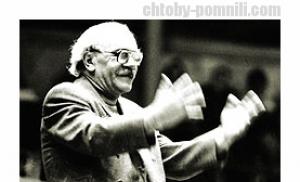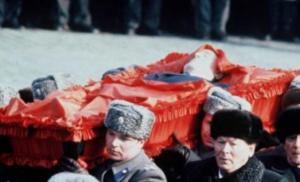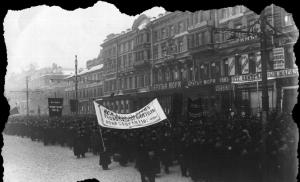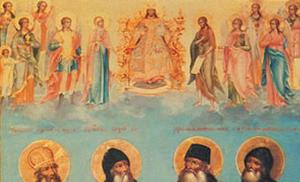Parsons functions. General theory of social action by T. Parsons
Talcott Parsons
Parsons Talcott (1902-1979). Prominent American theoretical sociologist, student P.A. Sorokin, the creator of the theory of social action and system-functional direction in modern sociology. Parsons put forward the task of building a general sociological theory and made a serious attempt to solve it. He paid attention to the problem of stability and survival of society as a social system. His main works: “The structure of social action” (1937), “Social system” (1951), “Towards a general theory of action” (1952), “Social system and evolution of the theory of action” (1977), “Theory of action and the conditions of human existence ”(1978) and others.
A. Akmalova, V. M. Kapitsyn, A. V. Mironov, V. K. Mokshin. Dictionary-reference book on sociology. Educational edition. 2011.
Parsons Talcott (1902-1979) - American sociologist, head of the functional school. The name of Parsons is associated with the search for a "general theory" in contemporary Western sociology. The role of such a theory is claimed by the theory set forth by him in The Structure of Social Action (1937), Essays on Pure and Applied Sociological Theory (1949), The Social System (1952) and others. Using the method of structural and functional analysis, Parsons constructs a model of a social system, the initial cell of which is the act of interaction between individuals. The mechanism by which consistency is established in their actions and the fulfillment of the roles prescribed by society is carried out, from the point of view of Parsons, the assimilation of generally accepted norms, standards of behavior, their transformation into internal motives of activity. The main factors that determine the behavior of people (and, consequently, the nature of the social whole) are his ideal factors (first of all, the normative-value structure of social consciousness). Considering balance as the most important sign of the normal state of the social system, Parsons pays great attention to the processes of regulation, the means of social control over this state (the activities of political and legal bodies, reactions to the actions of people from others, etc.), designed to protect society from unwanted conflicts, abrupt changes, etc. In the works "Structure and progress in modern society" (1959), "Evolutionary universals in society" (1964), "Society. Historical and Comparative Aspects ”(1966) Parsons tries to use some of the ideas of evolutionism, to include an analysis of their changes in the description of social systems. At the same time, he understood by changes mainly the internal differentiation of the system, which enhances its adaptive ability (fitness), and not its transformation into a fundamentally different system.
Philosophical Dictionary. Ed. I.T. Frolov. M., 1991, p. 333.
Parsons Talcott (1902 - 1979) - American sociologist, founder of the school of structural functionalism and the theory of action. Since 1927 - teacher of economics, since 1931 - teacher, then head. Department of Social Relations, Faculty of Sociology, created by P.A. Sorokin, at Harvard University. Works: "The Structure of Social Action" (1937), "Essays on Sociological Theory" (1949), "Social System" (1951), "Structure and Process in Modern Society" (1960), "Theory of Sociology and Modern Society" (1967 ), "Politics and Social Structure" (1969), "The System of Modern Societies" (1971), etc. He was engaged in the creation of a general sociological theory, which was supposed to systematically combine the empirical and theoretical material of the entire complex of social sciences. Developed structural and functional analysis - one of the main methods of political research. According to Parsons, society is a relatively stable, well-integrated and stable structure; each element of society (subsystem) performs its function. He formulated four basic functional requirements for a social system that ensure its survival: adaptation, goal achievement, integration and maintenance of the model. The adaptation function is provided by the economic subsystem; goal-setting function - a political subsystem; function integration- legal institutions and customs; the function of maintaining the model - the system of beliefs, morality and agents of socialization (family, educational institutions, etc.).
Used materials of the book: Political thought of the Newest time. Personalii, ideas, concepts: A short guide / Comp. Mikhailova E.M. - Cheboksary: CHKI RUK, 2010, p. 26.
Parsons Tolkot (December 13, 1902, Colorado Springs - May 8, 1979, Munich) - American sociologist, head of the school of structural functionalism. Educated at the London School of Economics and the University of Heidelberg. From 1927 he taught at Harvard University, from 1944 - professor, and from 1946 - head of the department of social relations at Harvard University. When developing his general logical-deductive theoretical system of human reality, he relied on the ideas of E. Durkheim, W. Pareto, M. Weber, as well as the English economist A. Marshall. Parsons saw the specificity of social action in its symbolic nature (as evidenced by the use of such regulatory mechanisms as language, values, etc.), in its normativity (dependence on generally accepted norms and values), and finally, in its voluntarism (some irrationality, dependence on subjective vision of the situation). The starting points for the theory of social action are the concepts of "agent", "situation", "agent's orientation to the situation." Considering the motivational structure of social action, Parsons singled out a cognitive (cognitive) orientation, which includes the ability to select individual objects in the world around them by their properties, place, etc. needs, an estimated orientation - the ability to make further selection of objects in terms of their priority. In addition, for the characterization of social action, the ability of the subject to set a goal and strive to achieve it, as well as to foresee what changes in the situation may lead to, is important. Introducing the concept of anticipation, Parsons outlined the fact that social action is focused on the expectations of other partners in the situation and depends on them. Finally, the value orientation set by culture regulates action depending on objectively existing "external symbols" - values or norms. Thus, Parsons distinguished in social action relatively autonomous spheres of personality with its needs and culture.
Developing the general methodological principles of sociology in the spirit of the systemic and functional approaches, Parsons considered the main problem of maintaining social equilibrium (a concept borrowed from Pareto), maintaining public order, a given stable state. Social conflicts, revolutions and other upheavals are manifestations of the painful state of society. From the standpoint of functionalism, Parsons considered each social phenomenon in terms of its role in maintaining stability and balance in society and formulated a set of functional problems, the solution of which is necessary to preserve the integrity of the social system. Among them are problems: adapting the system to external objects, achieving goals, integrating society and reproducing the structure and maintaining cultural patterns, as well as relieving stress.
At the level of the social system, the function of adaptation is provided by the economic subsystem, the function of goal achievement is the political one, integration is provided by legal institutions, and the reproduction of the structure is provided by culture (the system of beliefs, morality, the organs of socialization of the individual).
Parsons' structural and functional analysis was focused mainly on on the study of the mechanisms of the functioning of society. Turning at the end of his life to the problem of social development, Parsons considered it in the spirit of evolutionary theory, based on the principle of functional differentiation. The appearance of a qualitatively new thing in the course of social development was essentially denied.
Parsons' theoretical and methodological concepts have had a significant impact on modern Western sociology and continue to develop and refine. At the same time, conservatism and the excessive complexity of its concept became the object of criticism of radical sociologists.
E.V. Osipova
New Philosophical Encyclopedia. In four volumes. / Institute of Philosophy RAS. Scientific ed. advice: V.S. Stepin, A.A. Guseinov, G.Yu. Semigin. M., Mysl, 2010, vol. III, N - S, p. 204-205.
Parsons Talcott (12/13/1902, Colorado Springs, Colorado, - 8.5.1979, Munich), American theoretical sociologist, one of the main representatives of the structural-functional direction in bourgeois sociology.
Parsons relied on the works of M. Weber, E. Durkheim, A. Marshall, V. Pareto, and also used modern systemic, cybernetic and symbolic-semiotic representations. Parsons defended the need to build a general analytical logical-deductive theory of human action as the basis for solving particular empirical problems. Human action, according to Parsons, is a self-organizing system, the specificity of which, in contrast to the systems of physical and biological action, he saw, firstly, in symbolism, that is, in the presence of such symbolic mechanisms of regulation as language, values, etc. etc .; secondly, in normativity, that is, in the dependence of an individual action on generally accepted values and norms; finally, in voluntarism, that is, in a certain irrationality and independence from the cognized conditions of the environment and, at the same time, dependence on subjective “definitions of the situation”. On the basis of this, Parsons built an abstract formalized model of the system of action, including cultural, social, personal and organismic subsystems that are in a relationship of mutual exchange. One of the main components of Parsons' concept is the so-called invariant set of functional problems: adaptation, goal achievement, integration, structure reproduction and stress relief, the solution of which is provided by specialized subsystems. So, within the social system, the function of adaptation is provided by the economic subsystem, the function of goal achievement is the political subsystem, the function of integration is the legal institutions and customs, the function of reproduction of the structure is the system of beliefs, morality and the organs of socialization (including the family and educational institutions).
The system of concepts introduced by Parsons has had a significant impact on American sociology, including empirical research. At the same time, his theory has been criticized by empirically oriented or radically thinking bourgeois sociologists for its intellectual complexity and conservatism (C.R. Mills). Marxist sociologists criticize Parsons' theory for its formalism, ahistoricality, idealistic orientation, underestimation of the importance of social conflicts and contradictions, apologetic attitudes, show the inconsistency of the claims of his concept of structural functionalism to the role of an all-encompassing sociological and anthropological theory.
Philosophical Encyclopedic Dictionary. - M .: Soviet encyclopedia. Ch. edition: L. F. Ilyichev, P. N. Fedoseev, S. M. Kovalev, V. G. Panov. 1983.
Compositions: Family. Socialization and interaction process, L., 1956; Toward a general theory of action, Camb., 1959 (with E. A. Shils); The sosial system, Glencoe (111.) 19592; The structure of social action, N. Y. 19612; Economy and society, L., 1964 (with N. Smelser); Social structure and personality, Ν. Υ., 1964; Societies: evolutionary and comparative perspectives, Englewood Cliffs (N. J.), 1966; Sociological theory and modern society, N. Υ.-L., 1967; Some problems of general theory in sociology, in: Theoretical sociology, ed. by B. J. Tiryakian, N. Y. 1970; The evolution of societies, Englewood Cliffs (Ν. Α.), 1977; Social system and the evolution oi action theory, N. Y.-L., 1977; in Russian lane, -General. problems of sociology, in the book: Sociology today, M., 1965; Information bulletin Nauch. Council on the problems of specific social research of the Academy of Sciences of the USSR, no. 6, c. 1-2, M., 1968; No. 38, M., 1969; "Introduction" and "Conclusion" ("General Review"), in the book: Amer. sociology, trans. from English, M., 1972.
Literature: A. G. Zdravomyslov, The problem of interest in sociology. theory, L., 1964; Criticism of modern bourgeois. theoretical sociology, M., 1977; History of the bourgeois. sociology of the first sex. 20th century, M., 1979, Ch. 14; The social theories of Talcott Parsons, ed. by M. Black, N. Y. 1961; Gouldner A. W., The coming crisis of western sociology, N. Y.-L., 1970.
Read on:
Philosophers, Lovers of Wisdom (Biographical Index).
Historical Persons of the United States (Biographical Index).
Compositions:
General theoretical problems of sociology. - In the book: Sociology today. M., 1965;
The system of modern societies. M., 1997;
The Structure of Social Action. N. Y. 1937;
The social System. N. Y. 1951;
Societies: Evolutionary and comparative Perspectives. Englewood Cliffs (N. J.), 1966;
Action Theory and the Human Condition. N. Y., 1978.
Literature:
Zdravomyslov A.G., The problem of interest in sociology. theory, L., 1964;
Criticism of modern bourgeois. theoretical sociology, M., 1977;
History of the bourgeois. sociology of the first sex. 20th century, M., 1979, Ch. 14;
The social theories of Talcott Parsons, ed. by M. Black, N. Y. 1961;
Gouldner A. W., The coming crisis of western sociology, N. Y.-L., 1970.
Scientific activity
Having synthesized the theoretical approaches of Max Weber (whose works he translated), Georg Simmel, Emil Durkheim, Pareto, Alfred Marshall, Sigmund Freud, he developed a general theory of action and, in particular, social action (structural functionalism) as a self-organizing system. In the latter, which is given by a set of functional problems of any system (adaptation, goal achievement, integration, maintaining a sample), Parsons analytically isolates subsystems of social structure, culture, and personality. The orientations of the actor (actor) are described with the help of a set of standard (typical) variables. Parsons used this theoretical language to describe systems of economics, politics, law, religion, education, to analyze the family, hospital (and, in particular, mental hospital), school class, university, art, mass media, sexual, racial and ethnic relations, social deviations , and later - to build a neo-evolutionist comparative sociology of various societies involved and continue to be involved in the universal process of modernization. Parsons and his theory were critical to the emergence of sociology as an academic discipline.
At an early stage of research, Parsons sought to find a certain compromise between E. Durkheim's “sociologism”, which rigidly determined human behavior by the influence of the external social environment, and M. Weber’s “understanding” theory of social action, describing human behavior through correspondence to “ideal types”. The early works of Parsons were also significantly influenced by W. Pareto, who proposed a model of dividing human actions based on motivation into "logical" and non-logical ones, similar to Weber's, A. Marshall, G. Zimmel, Z. Freud.
The works of Parsons are written in a very complex language, which is sometimes boring to read due to the many private details, events and personalities, which causes difficulties even for interested readers. Parsons appears to be an incorrigible scholastic and lover of esoteric texts. He managed to create a gigantic deductive system of abstract concepts that embraces human reality in all its diversity. However, in empirical research and everyday sociological practice, no sociologist uses this system, preferring less capacious, but more operational particular theories.
Structural functionalism
Structural functionalism:
- a highly abstract, rigidly codified theoretical structure that claims to be a universal explanation of social reality;
- sociology studies the functions performed by social institutions and the social action of individuals who occupy a certain place in the social structure of society (statuses) and perform social roles prescribed by social norms and values;
- close connection between statics and dynamics, social system and social structure.
- biological organism (individual psychological state of a person, including instincts and biological needs that affect human behavior).
- personality system ("Ego"): the motivational structure of the individual; the organism and the personality system together form a "basic structure" and represent a set of individual needs and dispositions (goal-achievement as satisfaction of needs).
- social system - a set of patterns of behavior, social norms, social interaction (interaction) and social roles (integration).
- system of culture - cultural values and traditions necessary for the stable functioning of society.
Social order
Any system strives for equilibrium, since it is inherent in the agreement of the elements; it always acts on deviations in such a way as to correct them and return to an equilibrium state; the system overcomes any dysfunction, and each element invests something in maintaining its stability.
For Parsons, the element that organizes the interacting parts is the structure (the immovable unity of social actions in constant motion). Structure is understood as a system of social norms and statuses (or normative order).
The normative order includes: social order and social norms (unchanging rules that govern large masses of people by virtue of the legitimate status given to norms).
Social order arises under the influence of 2 processes:
- Social system tendencies towards self-preservation.
- Tendencies to maintain certain boundaries and constancy in relation to the environment (homeostatic equilibrium).
Typical variables are a concept that unites social action and social system; fundamental dilemmas faced by the actor of social action.
- Particularism (or universalism) - Actors must decide whether to evaluate a person using general criteria (universalism) or use unique criteria that apply only to a specific person (particularism).
- Human actions - it is necessary to decide whether to evaluate people by their actions or based on their personal qualities.
- Affective neutrality or affectivity - actors can be in certain relationships either for instrumental reasons that do not affect their feelings (affective neutrality), or for emotional reasons (affectivity).
- "Diffusion" or specialization - in any situation, individuals have to choose between involvement, along with other individuals, in a wide range of social activities ("diffuseness") and focus on achieving only specific, structured goals (specialization).
- Self-orientation or group orientation are selfish and altruitic actions.
- Ascriptive or accomplished.
Social systems
Major works
- The Structure of Social Action ()
- Essays in Sociological Theory, Pure and Applied ()
- Toward a General Theory of Action (, co-authored with E. Shiels)
- The Social System ()
- Working Papers in the Theory of Action (co-authored with E. Shiels and R. F. Bales)
- Family, socialization and interaction process (co-authored with R. F. Bales)
- Economy and Society (, in collaboration with N. Smelzer)
- Structure and Process in Modern Societies ()
- Theories of society; foundations of modern sociological theory ()
- Societies: Evolutionary and Comparative Perspectives ()
- The Negro American (, co-authored with C.B. Clark)
- Sociological Theory and Modern Society ()
- Politics and Social Structure ()
- The System of Modern Societies ()
- The American University (, co-authored with D. M. Platt)
- Social Systems and the Evolution of Action Theory ()
- Action Theory and the Human Condition ()
Consolidated editions
- Talcott Parsons on institutions and social evolution: selected writings / Leon H Mayhew, ed. Chicago: University of Chicago Press, 1982
- Readings from Talcott Parsons / Peter Hamilton, ed. London: Tavistock Publications, 1983
Talcott Parsons (1902-1979) occupies a prominent place in the history of sociology. Thanks to the activities of this professor at Harvard University, this discipline was brought to the international level. Parsons created a special style of thinking, which is characterized by a belief in the dominant role of scientific knowledge, reduced to building systems and organizing data. The main feature of this social thinker lies in the ability to differentiate and also in identifying shades of meanings in statements that have already managed to occupy their strong niche in the scientific world, and in the ability to invent more and more new and improved analytical schemes.
The researcher approached his ideas, thanks to which the theory of the social system of T. Parsons was published, relying on knowledge in biology, as well as on the works of European sociologists and economists who worked in the late 19th - early 20th centuries. His teachers and idols were A. Marshall, E. Durkheim, M. Weber and V. Pareto.
Main idea
Parsons' theory was an alternative to the Marxist understanding of the primacy of revolution in the global transformation of the world. The work of this scientist is most often assessed as “difficult to understand”. However, behind a palisade of complex argumentation and abstract definitions in Parsons' theory, there is one big idea. It lies in the fact that social reality, despite its inconsistency, complexity and immensity, has a systemic character.
T. Parsons was a staunch supporter of the fact that the beginning of scientific sociology was laid at the moment when all the connections between people began to be considered by scientists as a single system. The founder of this approach to building society was K. Marx.
In his theory of social action, Parsons built a new theoretical It, he described in his writings under the titles:
- "Social System";
- "The structure of social action";
- "The social system and the evolution of the theory of action."
The central idea of the theory of social action by T. Parsons was the idea of the presence of a certain state of society, when consent dominates conflict, that is, there is a consensus. What does this mean? This speaks of the organization and orderliness of social actions and the entire social system as a whole.
A conceptual framework is built in Parsons' theory. Its core is the process of interaction of various social systems. At the same time, it is colored by personal characteristics and is limited by the culture of people.
Parsons' theory also deals with social order. According to the author, it contains a number of interrelated meanings. Among them is the idea that there are no coincidences in the behavior of each individual. In all human actions, there is complementarity, consistency, reciprocity, and, consequently, predictability.
If you carefully study the social theory of T. Parsons, it becomes clear that the author was primarily interested in problems related to changes and destruction of social order. The Harvard professor was able to answer the questions that once worried O. Comte. This scientist in his writings on "social statics" focused on self-preservation, stability and inertia of the social order. O. Comte believed that society is able to resist external and internal tendencies aimed at changing it.
T. Parsons' theory is called synthetic. This is due to the fact that it relies on various combinations of factors such as value agreement, individual interest and coercion, as well as on inertial models of the system of society.

In the social theory of Parsons, conflict is considered as the cause of disorganization and destabilization of the life of society. Thus, the author has identified one of the anomalies. Parsons believed that the main task of the state is to maintain a conflict-free type of relationship between all elements that make up society. This will ensure balance, cooperation and mutual understanding.
Let us consider briefly the theory of the social system of T. Parsons.
Fundamental concepts
Parsons' theory of action considers the boundaries that exist in the actions of people. Working on his work, the scientist used concepts such as:
- an organism that is the biophysical basis of an individual's behavior;
- an action that is normatively regulated, purposeful and motivated behavior;
- a figure expressed by an empirical system of actions;
- a situation by which we mean a zone of the external world that is significant for a person;
- a social system in which there are one or more people between whom interdependent actions take place;
- orientation to the situation, that is, its significance for the individual, for his standards and plans.
Relationship Objects
The scheme of society considered in the Parsons theory includes the following elements:
- Social facilities.
- Physical objects. These are collectives and individuals. They are the means and at the same time the conditions for the implementation of actions by social objects.
- Cultural objects. These elements represent holistic representations, symbols, systems and ideas of beliefs with constancy and regularity.
Action elements
Any leader, according to Parsons, always correlates the situation that has arisen with his goals and needs. In this case, the motivational component is connected. This is due to the fact that in any situation, the main goal of the actor is to receive a "reward".
For the theory of action, motive is not of paramount importance. It is much more important in this case to consider the agent's experience, that is, his ability to determine the situation in order to organize the optimal impact on it. This should be followed by more than just a reaction. The actor needs to develop his own system of expectations, taking into account the peculiarities of the elements of situations.
However, sometimes everything is much more complicated. So, in social situations, it is important for the actor to consider those reactions, the manifestation of which is possible from other individuals and groups. This should also be taken into account when selecting an option for your own action.

In the process of social interaction, symbols and signs that carry a certain meaning begin to play an essential role. They become means of communication for figures. Thus, cultural symbolism is included in the experience of social action.
That is why, in the terminology of Parsons' theory, the personality is an organized system of the individual's orientation. At the same time, along with motivation, we also consider those values that serve as constituent elements of the "cultural world".
Interdependence
How is the system considered in the theory of T. Parsons? In his writings, the scientist puts forward the idea that any of them, including the social one, has interdependence. In other words, if any changes occur in one of the parts of the system, then this will certainly affect it as a whole. The general concept of interdependence in Parsons social theory is considered in two ways. Let's consider each of them in more detail.
Conditioning factors
What constitutes the first of the two directions of interdependence in society? It represents those conditions that contribute to the formation of a hierarchy of conditioning factors. Among them:
- Physical conditions for the existence (life) of a person. Without them, it is impossible to conduct any activity.
- The existence of individuals. Justifying this factor, Parsons gives an example with aliens. If they exist within the limits of another solar system, then they are biologically different from humans, and, as a result, they lead a social life different from the earthly one.
- Psychophysical conditions. They stand on the third level of the hierarchy and are one of the necessary conditions for the existence of society.
- The system of social values and norms.
Control factors
In the theory of the social system of Parsons, the second direction of interdependence, which takes place in society, is also widely disclosed. It is represented by a hierarchy of management and control factors. Adhering to this direction, one can approach the consideration of society from the point of view of the interaction of two subsystems. Moreover, one of them contains energy, and the second - information. What are these subsystems? The first of them in the theory of action by T. Parsons is economics. After all, it is this side of social life that has a high energy potential. At the same time, the economy can be managed by people who are not involved in production processes, but at the same time organize other people.

And here the problem of ideology, norms and values that allow to control society is of no small importance. They implement a similar function in the control subsystem (sphere). But this raises another problem. It deals with unplanned and planned management. T. Parsons believed that in this case, the dominant role is played by political power. It represents the generalizing process with which it is possible to control all other processes taking place in society. Thus, government is the highest point in the cyber hierarchy.
Public subsystems
Parsons systems theory identifies in society:
- authorities. This institution is necessary to ensure control over what is happening on the territory of the state.
- The upbringing and socialization of each person, from an early age, as well as the exercise of control over the population. This subsystem has acquired particular importance at the present time in connection with the arisen problem of information aggression and domination.
- The economic basis of society. It finds its expression in the organization of social production and in the distribution of its product between individuals and strata of the population, as well as in the optimal use of social resources, primarily human ones.
- The totality of those cultural norms that are embodied in institutions. In a slightly different terminology, this subsystem is the maintenance of cultural institutional patterns.
- Communication system.
Social evolution
How does he view Parsons? The scientist is of the opinion about what constitutes one of the elements of the development of living systems. In this regard, Parsons argues about the existence of a connection between the appearance of man, considered as a biological species, and the emergence of societies.

According to biologists, humans belong to only one species. That is why Parsons concludes that all communities have the same roots, while going through the following stages:
- Primitive. This type of community is characterized by the presence of homogeneity of its systems. Religious and family relationships are at the core of social ties. Each of the members of such a society plays a role prescribed by society, which, as a rule, depends on the gender and age of the individual.
- Advanced primitive. In this society, there is already a division into political, religious and economic subsystems. The role of the individual in this case increasingly depends on his success, which comes with luck or acquired skills.
- Intermediate. In such a society, a further process of differentiation takes place. It affects systems of social action, causing the need for their integration. Writing appears. At the same time, literate people are separated from everyone else. Human values and ideals are freed from religiosity.
- Modern. The beginning of this stage was laid in ancient Greece. At the same time, a system has emerged characterized by social stratification, which is based on the criterion of success, as well as the development of supporting, integrative, goal-directed and adaptive subsystems.
Prerequisites for the survival of society
In Parsons' theory of action, society is viewed as an integral system. The scientist considers self-sufficiency as its main criterion, as well as the presence of a high level of self-sufficiency towards his environment.
When considering the concept of society, Parsons assigned an important place to certain functional prerequisites, to which he attributed:
- adaptability, that is, the ability to adapt to environmental influences;
- maintaining order;
- purposefulness, expressed in the desire to achieve the set goals in relation to the environment;
- integration of individuals as acting elements.
As for adaptation, Parsons made repeated statements about it, and in different contexts. In his opinion, it is the functional condition that any social system must meet. Only then will they be able to survive. The scientist believed that the need for adaptation of an industrial society is satisfied through the development of its specialized subsystem, which is the economy.

Adaptation is the way in which any social system (state, organization, family) is able to manage its environment.
To implement the integration or balance of the social system, there is a centralized value system.
When considering the prerequisites for the survival of society, Parsons developed the idea of M. Weber, who believed that the basis of order is the acceptance and approval by the majority of the population of those norms of behavior that are supported by effective state control.
Changing social systems
Such a process, according to Parsons, is multifaceted and rather complex. All factors influencing the change in the social system are independent among themselves. Moreover, none of them can be considered as the original. A change in one of the factors will certainly affect the state of all the others. If the changes are positive, then we can say that they indicate the ability of society to implement the set values.

The social processes taking place in this case can be of three types:
- Differentiation. A striking example of this type of social process is the transition from traditional peasant farming to industrial production that goes beyond the family. Differentiation was observed in society and during the separation of higher education from the church. In addition, a similar type of social process takes place in modern society. It is expressed in the emergence of new classes and strata of the population, as well as in the differentiation of professions.
- Adaptive reorganization. Any group of people must be able to adapt to new conditions. A similar process took place with the family. At one time, she had to adapt to new functions for her, dictated by the industrial society.
- Social transformation. At times, society becomes more complex and differentiated. This happens due to the attraction of a wider range of social units to it. Thus, new elements appear in society with a simultaneous increase in internal ties. It is constantly becoming more complex, and therefore changes its quality level.
Talcott Parsons (1902-1979) is one of the most significant sociologists of the second half of the 20th century, who most fully formulated the foundations of functionalism. In his writings, Parsons devoted considerable attention to the problem of social order. He proceeded from the fact that social life is more characterized by "mutual benefit and peaceful cooperation than mutual hostility and destruction", arguing that only adherence to common values provides the basis for order in society. He illustrated his views with examples of commercial transactions. When executing a transaction, the interested parties draw up a contract based on statutory rules. In Parsons' perspective, the fear of sanctions for breaking the rules is not enough to compel people to follow them rigorously. Moral obligations are central to this. Therefore, the rules governing commercial transactions must flow from generally accepted values that indicate what is right, what is ought. Consequently, order in the economic system is based on a general agreement on commercial morality. The sphere of business, like any other component of the activity of society, is necessarily a sphere of morality.
Parsons, considering society as a system, believes that any social system must meet four basic functional requirements:
adaptation - refers to the relationship between the system and its environment: in order to exist, the system must have a certain degree of control over its environment. For society, the economic environment is of particular importance, which should provide people with the necessary minimum of material benefits;
goal attainment - expresses the need of all societies to set goals for which social activity is directed;
integration - refers to the coordination of parts of a social system. The main institution through which this function is realized is law. Through legal norms, relations between individuals and institutions are streamlined, which reduces the potential for conflict. If a conflict does arise, it should be settled through the legal system, avoiding the disintegration of the social system;
retention of the sample (latency) - involves the preservation and maintenance of the basic values of society.
Parsons used this structural and functional grid in the analysis of any social phenomenon.
The consensus and stability of a system does not mean that it is incapable of change. On the contrary, in practice, no social system is in a state of perfect equilibrium, so the process of social change can be represented as a “mobile equilibrium”. So, if the relationship between society and its environment changes, this will lead to changes in the social system as a whole. Parsons continued to develop the theory of social action
Weber. He considers the system of (social) action to be the subject of sociology, which, in contrast to social action (the action of an individual), includes the organized activity of many people. The system of action includes subsystems that perform interrelated functions: 1) social subsystem (group of people) - the function of integrating people; 2) cultural subsystem - reproduction of a pattern of behavior used by a group of people; 3) personal subsystem - goal achievement; 4) behavioral organism - the function of adaptation to the external environment.
Parsons considers society as a type of social subsystem with the highest degree of self-sufficiency in relation to the environment - natural and social. Society consists of four systems - organs that perform certain functions in the structure of society:
societal community, consisting of a set of norms of behavior, serving to integrate people into society;
a subsystem for the preservation and reproduction of a sample, consisting of a set of values and serving to reproduce a sample of typical social behavior;
political subsystem serving to set and achieve goals;
economic (adaptive) subsystem, which includes a set of roles of people in interaction with the material world.
The core of society, according to Parsons, is the societal subsystem, consisting of different people, their statuses and roles, which need to be integrated into a single whole. The societal community is a complex network (horizontal relationship) of interpenetrating typical collectives and collective loyalties: families, firms, churches, etc. Each such type of collective consists of many specific families, firms, etc., which include a certain number people.
Social evolution, according to Parsons, is part of the evolution of living systems. Therefore, following Spencer, he argued that there is a parallel between the emergence of man as a biological species and the emergence of modern societies. All people, according to biologists, belong to the same species. Therefore, we can assume that all societies descended from
one type of society. All societies go through the following stages: 1) primitive; 2) advanced primitive; 3) intermediate; 4) modern.
The primitive type of society (primitive communal society) is characterized by the homogeneity (syncretism) of its systems. The basis of social ties is formed by family and religious ties. Members of the society have the statuses of the role assigned to them by the society, in many respects depending on age and gender.
An advanced primitive society is characterized by division into primitive subsystems (political, religious, economic). The role of prescribed statuses is diminishing: people's lives are increasingly determined by their success, which depends on people's ability and luck.
In intermediate societies, further differentiation of systems of social action takes place. There is a need for their integration. A written language appears that separates the literate from everyone else. On the basis of literacy, the accumulation of information begins, its transmission over a distance, preservation in the historical memory of the people. The ideals and values of people are freed from religiosity.
Modern society emerges in Ancient Greece. It gave birth to a system of modern (European) societies, which are characterized by the following features:
differentiation of adaptive, targeting, integrative, supporting subsystems;
the basic role of the market economy (private property, mass production, the market for goods, money, etc.);
the development of Roman law as the main mechanism for the coordination and control of social activities;
social stratification of society based on the criteria of success (political, economic, cultural).
In every social system, two types of processes take place. Some processes are control and integrative, which restore equilibrium (stabilization) of the social system after external and internal disturbances. These social processes (demographic, economic, political, spiritual) ensure the reproduction of society and the continuity of its development. Other processes affect the system of basic ideals, values, norms that guide people in social behavior. They are called processes of structural change. They are deeper and deeper.
Parsons identifies four mechanisms for the evolution of social systems and societies:
the mechanism of differentiation, investigated by Spencer, when the systems of social action are divided into more specialized in their elements and functions (for example, the production and educational functions of the family were transferred to enterprises and schools);
the mechanism of increasing adaptability to the external environment as a result of the differentiation of systems of social action (for example, a farm produces more diversified products, with less labor costs and in large quantities);
an integration mechanism that ensures the inclusion of new systems of social action in society (for example, the inclusion of private property, political parties, etc.) in the post-Soviet society;
the mechanism of value generalization, consisting in the formation of new ideals, values, norms of behavior and their transformation into a mass phenomenon (for example, the rudiments of a culture of competition in post-Soviet Russia). The listed mechanisms of societies operate together, therefore the evolution of societies, for example, Russian, is the result of the simultaneous interaction of all these mechanisms.
Talcott Parsons(1902-1979) is one of the most significant sociologists of the second half of the 20th century, who most fully formulated the foundations of functionalism. In his writings, Parsons devoted considerable attention to the problem of social order. He proceeded from the fact that social life is more characterized by "mutual benefit and peaceful cooperation than mutual hostility and destruction", arguing that only adherence to common values provides the basis for order in society. He illustrated his views with examples of commercial transactions. When executing a transaction, the interested parties draw up a contract based on statutory rules. In Parsons' perspective, the fear of sanctions for breaking the rules is not enough to compel people to follow them rigorously. Moral obligations are central to this. Therefore, the rules governing commercial transactions must flow from generally accepted values that indicate what is right, what is ought. Consequently, order in the economic system is based on a general agreement on commercial morality. The sphere of business, like any other component of the activity of society, is necessarily a sphere of morality.
Consensus on values is a fundamental integrative principle in society. Generally recognized values lead to general goals that determine the course of action in specific situations. For example, in Western society, workers in a particular factory share the goal of efficient production, which arises from a common view of economic productivity. A common goal becomes an incentive for cooperation. Roles are the means of translating values and goals into actions. Any social institution presupposes the presence of a combination of roles, the content of which can be expressed with the help of norms that determine the rights and obligations in relation to each specific role. Norms standardize and streamline role-playing behavior, making it predictable, which forms the basis of social order.
Based on the fact that consensus is the most important social value, Parsons sees the main task of sociology in the analysis of the institutionalization of samples of value orientations in the social system. When values are institutionalized and behavior is structured in accordance with them, a stable system arises - a state of "social equilibrium". There are two ways to achieve this state: 1) socialization, through which social values are passed from one generation to another (the most important institutions that perform this function are the family, the educational system); 2) creation of various mechanisms of social control.
Parsons, considering society as a system, believes that any social system must meet four basic functional requirements:
- adaptation - refers to the relationship between the system and its environment: in order to exist, the system must have a certain degree of control over its environment. For society, the economic environment is of particular importance, which should provide people with the necessary minimum of material benefits;
- goal attainment - expresses the need of all societies to set goals for which social activity is directed;
- integration - refers to the coordination of parts of a social system. The main institution through which this function is realized is law. Through legal norms, relations between individuals and institutions are streamlined, which reduces the potential for conflict. If a conflict does arise, it should be settled through the legal system, avoiding the disintegration of the social system;
- retention of the sample (latency) - involves the preservation and maintenance of the basic values of society.
Parsons used this structural and functional grid in the analysis of any social phenomenon.
The consensus and stability of a system does not mean that it is incapable of change. On the contrary, in practice, no social system is in a state of perfect equilibrium, so the process of social change can be represented as a “mobile equilibrium”. So, if the relationship between society and its environment changes, this will lead to changes in the social system as a whole.
Sociology T. Parsons
Talcott Parsons(1902-1979) - American sociologist, very influential in the XX century, an outstanding representative of structural functionalism. The main works are "The Structure of Social Activity" (1937), "The System of Modern Societies" (1971). He considered himself a follower of Durkheim, Weber and Freud, who were trying to carry out the overdue synthesis of utilitarian (individualistic) and collectivist (socialist) elements of thought. “The intellectual history of recent years,” writes T. Parsons, “makes, it seems to me, inevitable the following conclusion: the relationship between the Marxist type of thinking and the type of thinking represented by the supporters of the theory of action at the turn of the twentieth century has the character of a stage sequence in a certain developmental process ".
Parsons continued to develop the theory of social action. he considers system of (social) action, which, in contrast to social action (the action of an individual), includes the organized activities of many people. The system of action includes subsystems that perform interrelated functions: 1) social subsystem (group of people) - the function of integrating people; 2) cultural subsystem - reproduction of a pattern of behavior used by a group of people; 3) personal subsystem - goal achievement; 4) behavioral organism - the function of adaptation to the external environment.
The subsystems of the system of social action differ functionally, having the same structure. Social subsystem deals with the integration of the behavior of people and social groups. Societies (family, village, city, country, etc.) are the types of social subsystems. Cultural(religious, artistic, scientific) subsystem is engaged in the production of spiritual (cultural) values - symbolic meanings that people, organized into social subsystems, implement in their behavior. Cultural (religious, moral, scientific, etc.) meanings orient human activity (give it meaning). For example, a person rises to the attack, risking his life, for the sake of defending the homeland. Personal the subsystem realizes its needs, interests, goals in the process of some activity in order to satisfy these needs, interests, and achieve goals. Personality is the main executor and regulator of action processes (a sequence of some operations). Behavioral organism is a subsystem of social action, including the human brain, human movement organs, capable of physically affecting the natural environment, adapting it to the needs of people. Parsons emphasizes that all of the listed subsystems of social action are "ideal types", abstract concepts that do not exist in reality. Hence the well-known difficulty in the interpretation and understanding of T. Parsons.
Parsons considers society as a type of social subsystem with the highest degree self-sufficiency in relation to the environment - natural and social. Society consists of four systems - organs that perform certain functions in the structure of society:
- societal community, consisting of a set of norms of behavior, serving to integrate people into society;
- a subsystem for the preservation and reproduction of a sample, consisting of a set of values and serving to reproduce a sample of typical social behavior;
- political subsystem serving to set and achieve goals;
- economic (adaptive) subsystem, which includes a set of roles of people in interaction with the material world.
The core of society, according to Parsons, is societal a subsystem consisting of different people, their statuses and roles that need to be integrated into a single whole. The social community is a complex network (horizontal relationship) of interpenetrating typical collectives and collective loyalties: families, firms, churches, etc. a type the team consists of many specific families, firms, etc., which include a certain number of people.
Social evolution, according to Parsons, is part of the evolution of living systems. Therefore, following Spencer, he argued that there is a parallel between the emergence of man as a biological species and the emergence of modern societies. All people, according to biologists, belong to the same species. Therefore, we can assume that all societies descended from one type of society. All societies go through the following stages: 1) primitive; 2) advanced primitive; 3) intermediate; 4) modern.
Primitive the type of society (primitive communal society) is characterized by the homogeneity (syncretism) of its systems. The basis of social ties is formed by family and religious ties. Members of the society have the statuses of the role assigned to them by the society, in many respects depending on age and gender.
Advanced primitive society is characterized by division into primitive subsystems (political, religious, economic). The role of prescribed statuses is diminishing: people's lives are increasingly determined by their success, which depends on people's ability and luck.
V intermediate societies are further differentiated systems of social action. There is a need for their integration. A written language appears that separates the literate from everyone else. On the basis of literacy, the accumulation of information begins, its transmission over a distance, preservation in the historical memory of the people. The ideals and values of people are freed from religiosity.
Modern society emerges in ancient Greece. It gave birth to a system of modern (European) societies, which are characterized by the following features:
- differentiation of adaptive, targeting, integrative, supporting subsystems;
- the basic role of the market economy (private property, mass production, the market for goods, money, etc.);
- the development of Roman law as the main mechanism for the coordination and control of social activities;
- social stratification of society based on the criteria of success (political, economic, cultural).
In every social system, two types of processes take place. Some processes - managing and integrative, which restore the balance (stabilization) of the social system after external and internal disturbances. These social processes (demographic, economic, political, spiritual) ensure the reproduction of society and the continuity of its development. Other processes affect the system of basic ideals, values, norms, by which people are guided in social behavior. They are called processes structural changes. They are deeper and deeper.
Parsons identifies four mechanisms for the evolution of social systems and societies:
- mechanism differentiation, investigated by Spencer, when the systems of social action are divided into more specialized in their elements and functions (for example, the production and educational functions of the family were transferred to enterprises and schools);
- increasing mechanism adaptability to the external environment as a result of the differentiation of systems of social action (for example, a farm produces more diversified products, with less labor costs and in large quantities);
- mechanism integration ensuring the inclusion of new systems of social action in society (for example, the inclusion of private property, political parties, etc.) in the post-Soviet society;
- mechanism value generalization, consisting in the formation of new ideals, values, norms of behavior and their transformation into a mass phenomenon (for example, the rudiments of a culture of competition in post-Soviet Russia). The listed mechanisms of societies operate together, therefore the evolution of societies, for example, Russian, is the result of the simultaneous interaction of all these mechanisms.
Parsons examines the evolution of modern (European) societies and does not hide this: “... the modern type of society arose in the only evolutionary zone - in the West<...>Consequently, the society of the Western Christian world served as the starting point from which "originated" what we call the "system" of modern societies. " (In my opinion, along with the Western type of society and the system of these societies, there is an Asian type of society and a system of Asian societies. The latter have significant differences from Western ones.)
From what has been said, we can conclude that Parsons' sociology is largely subjective in the sense that Hayek puts it into this concept. This sociology focuses on the subjective component of social activity; considers collectivist the leading form of social activity; refuses to interpret social phenomena by analogy with the laws of nature; does not recognize the universal laws of social development; does not seek to design the reorganization of societies on the basis of open laws.













